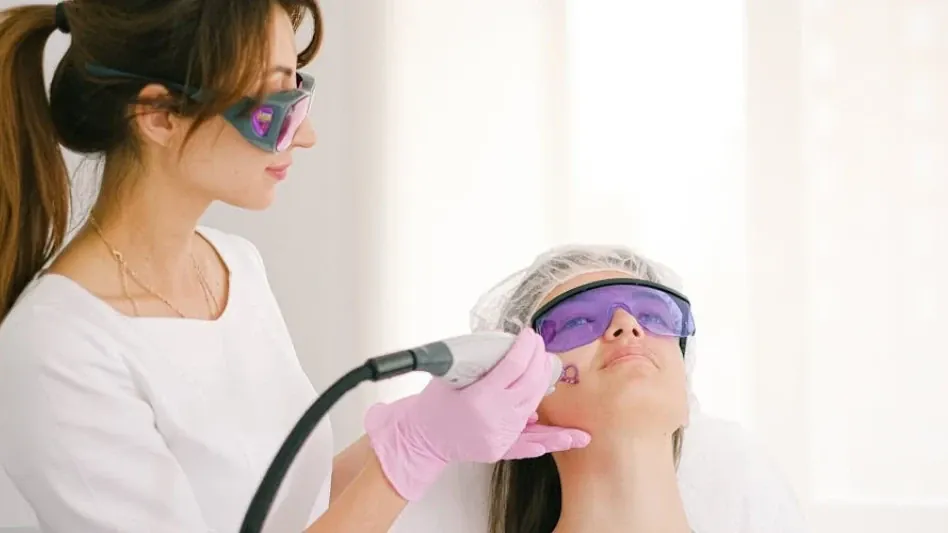The medical lasers market is set for remarkable growth from 2024 to 2029, driven by a surge in technological advancements, strategic business moves such as mergers and acquisitions, and a broadening scope of applications. In 2023, the market was valued at USD 5.30 billion and is projected to swell to USD 11.69 billion by 2029, reflecting a compound annual growth rate (CAGR) of 14.09%. This impressive expansion is fueled by both organic growth strategies, such as new product launches, and inorganic strategies, including mergers and acquisitions, employed by industry leaders. As technological innovations continue to take center stage, the medical lasers landscape promises a dynamic and competitive environment.
Key Drivers of Market Growth
The medical lasers market is experiencing rapid growth due to several key factors. One of the primary drivers is the increasing adoption of advanced laser technologies in various medical and cosmetic procedures. These technologies offer improved precision, reduced recovery times, and enhanced patient outcomes, making them highly attractive to both healthcare providers and patients. Furthermore, as the technology behind these lasers continues to evolve, their applications in treating a wide range of medical conditions expand, further driving market growth.
Another significant driver is the growing prevalence of chronic diseases and age-related conditions, which has led to a higher demand for minimally invasive treatments. Medical lasers are increasingly being used in the treatment of conditions such as cataracts, glaucoma, and skin disorders, further propelling market growth. Additionally, the rise in aesthetic consciousness among the population, coupled with the availability of advanced laser treatments for cosmetic procedures, has bolstered the demand for medical lasers. These factors combined create a compelling case for the continuous growth of the medical lasers market in the coming years.
Major Players and Market Fragmentation
The medical lasers market is notably fragmented, with a mix of dominant firms and numerous small, innovative companies entering the scene. Leading companies such as Bausch + Lomb, Candela, Koninklijke Philips, Boston Scientific, Cynosure, Lutronic, Fotona, Cutera, El.En. SPA, IRIDEX, and Shanghai Fosun Pharmaceutical account for significant market shares. These companies actively engage in mergers and acquisitions to enhance their product portfolios and solidify their market positions. This aggressive strategy allows them to maintain a competitive edge and cater to the evolving needs of the market.
Despite the dominance of major players, the market remains dynamic, with investigational and small companies continuously emerging. This fragmentation offers significant growth opportunities for new entrants, especially those bringing innovative solutions and technologies to the forefront. The continuous influx of new players contributes to the overall dynamism of the market, ensuring that it remains vibrant and competitive. This environment encourages innovation and drives the development of new and improved laser technologies, ultimately benefiting the end-users and patients.
Technological Advancements and New Product Launches
Recent activities in the market highlight several new product launches and approvals that signify technological advancements and diversification in applications. For instance, in 2024, Iridex Corporation introduced the Iridex 532 and Iridex 577 lasers in the US, marking their 35th anniversary. These lasers incorporate various treatment modes, including the company’s patented MicroPulse Technology, continuous wave, and an intuitive touchscreen interface. The introduction of these advanced lasers reflects the company’s commitment to innovation and improving patient outcomes.
Similarly, Meridian Medical launched its ophthalmic laser line in the US with FDA approval for the ME Q family lasers, along with two other medical lasers, MR Q SLT and MR Q Spine. These new products reflect the ongoing innovation and expansion within the medical lasers market. Such technological advancements not only enhance the capabilities of medical lasers but also widen their applications in various medical fields. This continuous innovation is a testament to the dynamic nature of the market and its potential for sustained growth.
Strategic Mergers and Acquisitions
Strategic mergers and acquisitions play a crucial role in the growth of the medical lasers market. Leading companies are actively pursuing these strategies to expand their product offerings and strengthen their market positions. For example, BIOLASE, a prominent player in the dental technology segment, made headlines in 2024 with the launch of the Waterlase iPlus Premier Edition. This all-tissue laser system is designed to enhance dental care by incorporating multiple integrated tools that improve both user and patient experiences.
Acclaro Medical introduced the UltraClear Laser-Coring in 2023, a pioneering tissue coring technology aimed at addressing deep scars, wrinkles, and various age-related skin issues suitable for all skin types. The same year saw International Medical Laser partnering with DEKA Trio to launch a new laser accessory for scar revision and treatment. These strategic moves by leading companies not only enhance their market positions but also drive innovation and growth within the industry. By expanding their product portfolios and leveraging new technologies, these companies can better meet the evolving needs of the market.
Diversification of Application Areas
The diversification of application areas is another significant trend in the medical lasers market. Medical lasers are being used in a wide range of procedures, from ophthalmology and dermatology to dentistry and general surgery. This diversification is driven by the continual improvement of laser technologies and their ability to provide precise, minimally invasive treatments. As a result, medical lasers are becoming increasingly versatile, catering to a broader range of medical conditions and procedures.
Cynosure’s launch of the PicoSure Pro in 2022 marked a significant advancement in tattoo and pigment removal systems. This technology offers an exceptional absorption ratio of melanin to blood, becoming a key tool for skin revitalization. Another noteworthy mention is Solta Medical’s Clear + Brilliant Laser, introduced in the US in 2021 to provide more comprehensive and personalized treatments for various skin conditions. The introduction of such innovative products underscores the ongoing diversification of application areas within the medical lasers market, further driving its growth.
Emerging Opportunities and Market Dynamics
The medical lasers market is poised for significant growth between 2024 and 2029, driven by rapid technological advancements, strategic business initiatives like mergers and acquisitions, and an expanding range of applications. In 2023, the market’s value stood at USD 5.30 billion and is estimated to soar to USD 11.69 billion by 2029, marking a robust compound annual growth rate (CAGR) of 14.09%. This remarkable growth trajectory is attributed to a mix of both organic growth strategies, such as the introduction of new products, and inorganic growth strategies, including mergers and acquisitions led by industry leaders. The ongoing technological innovations are also playing a crucial role in shaping the future of the medical lasers market. As these advancements continue to evolve, they are expected to create a highly dynamic and competitive landscape, fostering increased investments and collaborations. Hence, the medical lasers market holds promise for a transformative period, benefiting various stakeholders and pushing the boundaries of medical technology.









